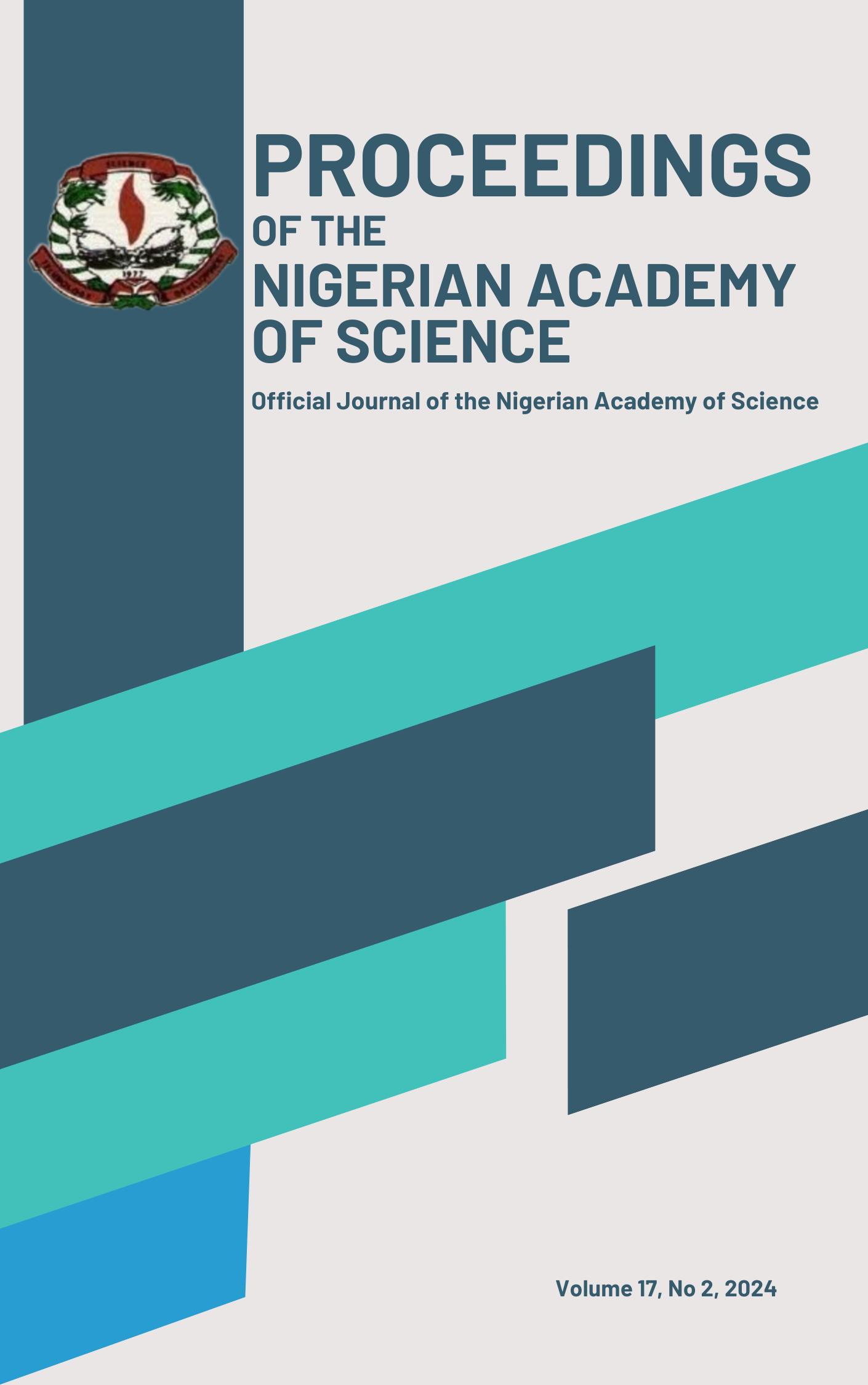Main Article Content
Metals contamination of Aquifer in Warri and Port- Harcourt (Niger – Delta Region)
Abstract
Heavy metal concentrations of hand-dug wells from twelve (12) locations within Warri and Port Harcourt metropolis of (Niger - Delta region) were studied. Twenty – four (24) hand-dug well water samples were analysed. The physicochemical parameters of the water samples were analyzed using Standard methods within 24 hours. The metal cations were also determined using Atomic Absorption Spectrophotometer (AAS) method, hardness, chloride and bicarbonate concentrations were determined using titrimetric method, sulphate was determined by spectrophotometer method. Most physicochemical parameters were found to be within the WHO acceptable limits for drinking water in all sample locations. Rumagbo and Udu has the highest (108.5 and 288.55 mg/L) while Elewere and Enware lowest (36.08 and 36.05 mg/L) concentrations of bicarbonate (HCO3-) respectively, the highest concentration of sulphate (SO42-) was recorded in Waterline and Efurun (72.00 and 82.75 mg/L). chloride (Cl-) (96.75 and 107.25 mg/L) for Mgbuoba and NPA meanwhile nitate (NO3-) (0.05 and 0.06 mg/L) have their highest concentrations observed at Eligbolo and NPA respectively. Eligbolo, and Udu have the highest concentration of manganese (Mn). Meanwhile arsenic (As) concentration was found to be highest in Rumuola and Udu (0.75 and 0.77mg/L) with the lowest concentration found in Elewere and Enware (0.38 and 0.46mg/L) respectively. In all, the concentrations of metals from the water samples observed were above the WHO limits of heavy water concentrations in drinking water. The results from this study show that there is high level of contamination of the aquifer (groundwater) in the studied areas. The long-term effect of continuous consumption of this groundwater can be of pose a threat to the health of the people.







